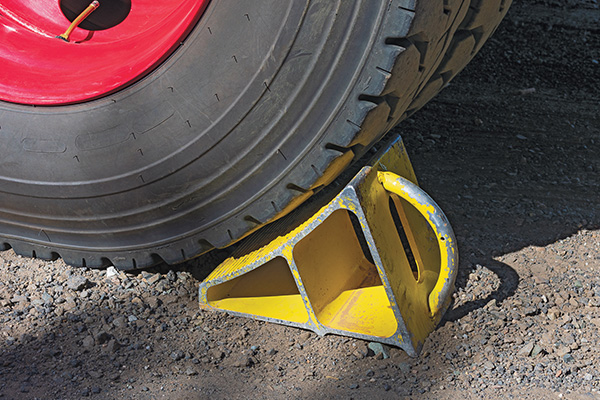Accident brings safety directive into focus

Knowing when and how to use chock blocks can keep employees and customers safe. (Photo: Michael Vi/iStock / Getty Images Plus/Getty Images)
Over the years, I have received a good amount of feedback on this column. Most of the comments are favorable. Some offer a different view. And I often get suggestions for articles to write.
This month, I am writing an article that has been suggested to me by an industry leader and good friend. It cuts close to home and deals with safe practices when offloading propane from bobtails – specifically, the need to use chock blocks properly.
This topic has been brought into focus by a tragic accident in New York involving a propane delivery driver who lost his life while preparing to make a delivery. His chock blocks were not set, and the bobtail rolled over on him and took his life. The residents arrived to find him pinned under his bobtail. Perhaps this incident could have been avoided had chock blocks been employed.
Employees are a company’s greatest asset. Keeping them safe while they perform their daily tasks is of paramount concern for all members of this or any industry, or it should be.
The propane industry provides robust training opportunities to its bulk tank and bobtail drivers to ensure they can do their jobs safely. Much of this training deals with proper onloading and offloading of our invaluable product due to its potential for catastrophic consequences when released into the air. But a danger hiding in plain sight is the bulk tank or bobtail itself.
CETP training from 2019 for bulk plants indicates that when offloading, the driver should position the bobtail so that both level gauges, the bobtail and receiving container are visible to the delivery driver. The shutoff valves for the bobtail and receiving tank should also be visible. And the bobtail should be at least 10 ft. from the receiving container.
It also requires the driver to take certain steps to prevent unintended movement of the bobtail during the offloading operation. Before exiting the bobtail, the driver is directed to engage the parking brake. Then, the driver is directed to turn off all electrical equipment. The training then requires that the bobtail driver “ensure that one drive wheel is restrained by wheel stops. A wheel stop may be a chock block, a parking barrier or a curb.”
This step is for the safety of the delivery driver and anyone who might come near the bobtail. It is recommended that you keep people away from the bobtail during the offloading operation, but if someone were to come close, this would protect them as well.
Read more: Retailer develops new wheel chock policies
It’s difficult to find statistics on injuries from rollover accidents online, but they do occur. At least one of the reasons for these incidents is the failure to use chock blocks or failure to set them properly.
Hopefully, this procedure of using chock blocks or a similar barrier to prevent movement of the bobtail or tanker during operation is standard at your company. If not, an incident like that which occurred in New York is reason enough to adopt a strict policy of ensuring that these steps are taken on each delivery.
Drivers face many hazards each day. The most common risk is driving the bobtail or tanker on the open road. There are constant reminders about how to drive safely. But the simple task of using chock blocks or a similar restraint is worth noting, if for no other reason than to emphasize the need to be vigilant in the hopes that we never have to hear news of another tragic incident like the one that occurred in New York.
John V. McCoy is with McCoy, Leavitt, Laskey LLC. His firm represents industry members nationally. He can be reached at jmccoy@MLLlaw.com or at 262-522-7007.
















